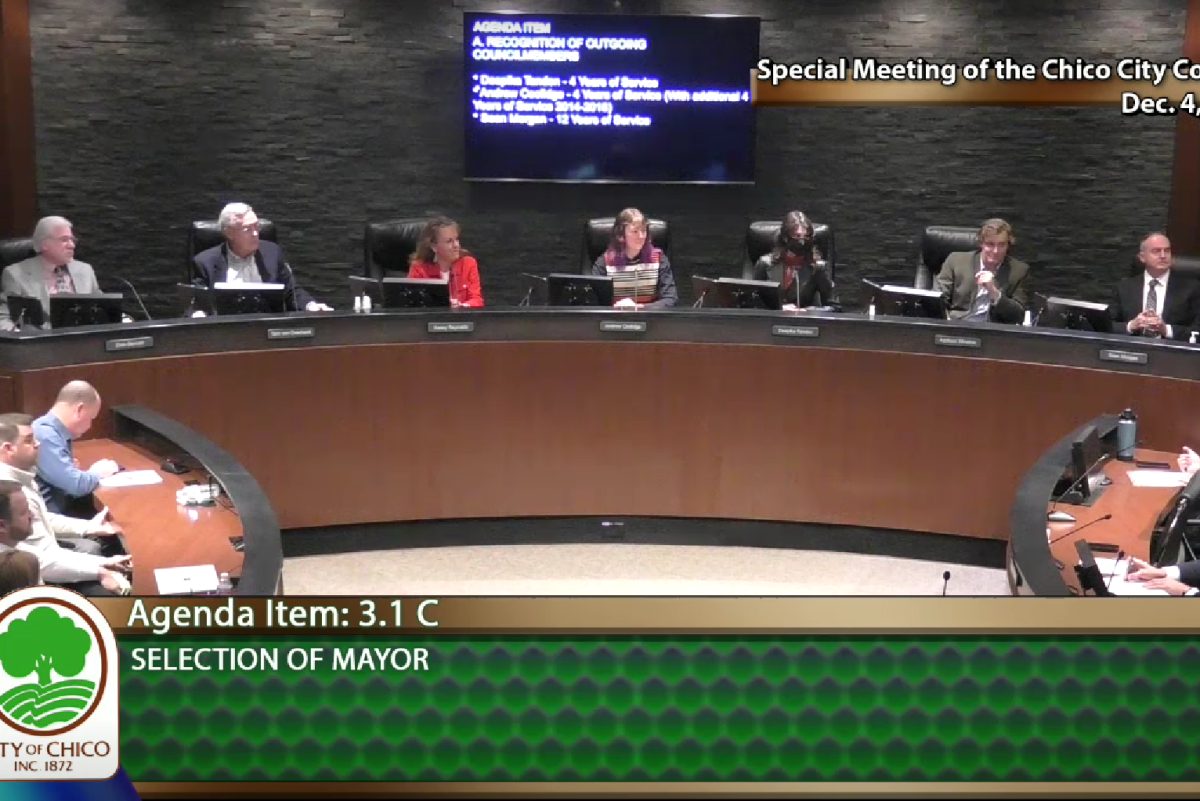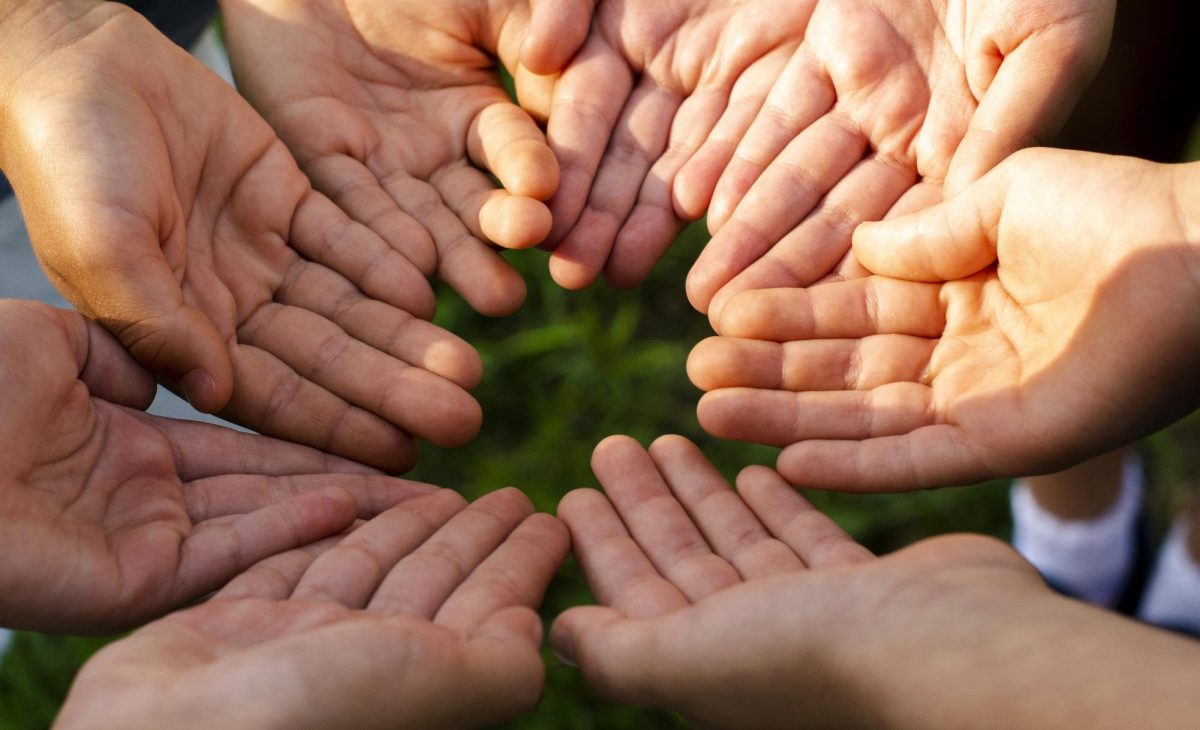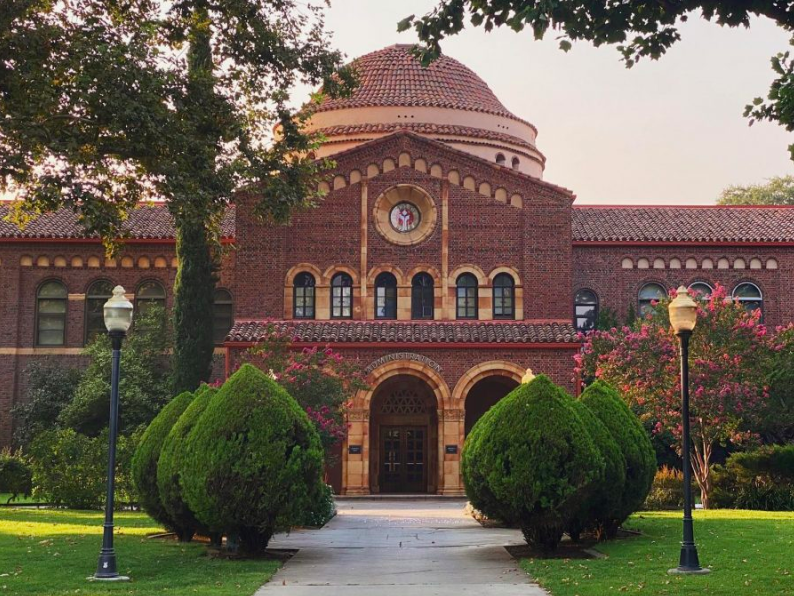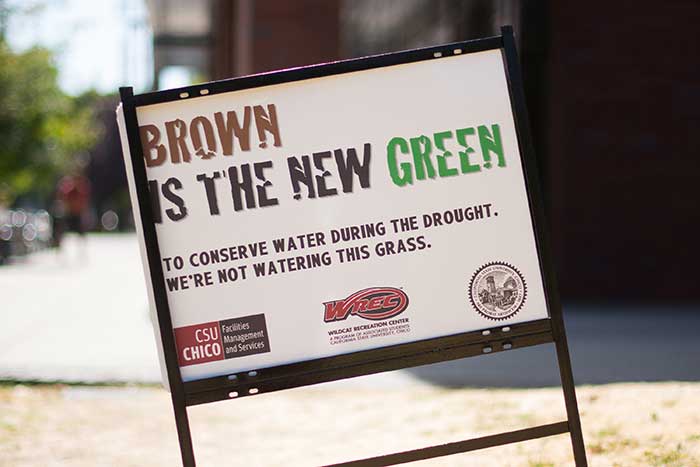
It’s hard not to notice the dead lawns when walking around campus. Signs that read things such as “brown is the new green” are hard to miss. Cutting off water to some lawns is just one of Chico State’s multiple efforts to cut back on water use, and they are now paying off.
Since the beginning of summer, Chico State’s water conservation has gone beyond the minimum requirement of 32 percent reduction. The campus as a whole cut back its water usage by 43 percent for two months in a row, Kevin Doyle, Interim Director of Facilities Management and Services said.
Earlier this year, Governor Jerry Brown mandated that California must reduce its water consumption by 25 percent, using 2013 as a base year. The necessary water reduction was then determined by each water district. The amount varies between districts because it’s based on water use per capita.
“June was the first month of our mandatory reductions which were a 32 percent reduction from the same month in 2013, and we beat that by 11 percent,” he said. “So in July we did the same thing again. We beat our budget by 11 percent.”

Chico State has 51 water meters across campus. The mandatory cutbacks work by placing a limit on water usage per meter. If a meter’s usage is too high, there will be a fine. On the other hand, extra water saved can be rolled over to the next month, according to Doyle.
Doyle credits the college’s success to a campus-wide effort. Water has been cut off to nearly seven acres of lawn, and the grass still being irrigated is only watered two days a week. Sprinkler heads have also been retrofitted to use less water.
The largest reduction in water use has been cutting back on irrigation. Seventy percent of Chico State’s irrigation comes from a well, so the college has cut back on both its well water and municipal water usage, Doyle said.
To continue saving water, the dead lawns will gradually be phased out and replaced with drought-tolerant plants, he said.
“We are trying to make up for the loss of grass in terms of campus appearance,” Doyle said. “We believe El Nino or not, this is the way we’re going to have to manage water going forward because we live in California. We’re a sustainable institution, so we’ll never go back to just throwing water around.”
There are no plans to cut off water to lawns that are still green. He added that iconic places at the center of campus, such as Kendall Lawn and the area around Trinity Hall, will always be watered.
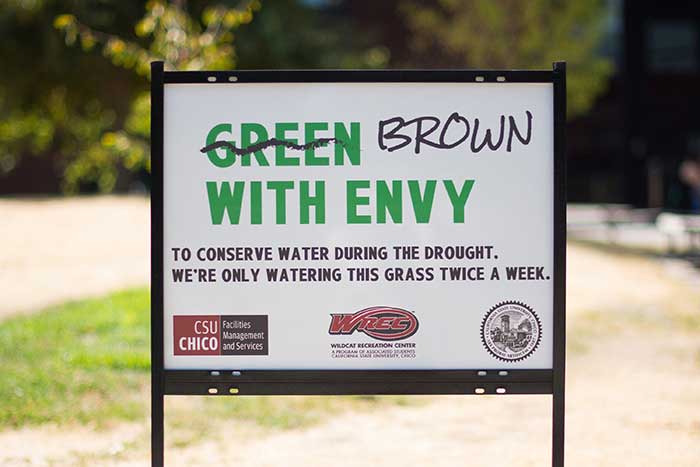
Plans are also in the works to plant a native garden in front of the Student Services Center. If approved by the Arboretum Committee in September, that area will be covered in river rocks and drought-tolerant California native species will be planted.
Doyle added that the new plants will be watered by a drip line instead of a sprinkler, and there will be signs identifying each species along with places to sit.
Lawns are not the only thing that will be replaced over the course of the school year. Urinals and toilets in bathrooms across campus will be replaced with ones that use less water, according to Doyle.
More than 200 low-flow toilets and urinals will be gradually installed starting in mid-September. These toilets are expected to save up to 700,000 gallons of water a year, he said.
Efforts are also being made at the Wildcat Recreation Center to conserve water. Towel service is suspended and the pool is being covered at night, which reduces evaporation. The WREC also made a video showing its efforts to cut back on water usage.
Even if the drought ends and restrictions are lifted, water conservation at Chico State is here to stay. The current water restrictions go until February 2016 when they will either expire or be extended depending on rainfall.
“Who knows what they’ll put in place after February 2016,” Doyle said. “But we’re going to plan to keep improving our water conservation going forward just like we’ve done with electricity for years. I think it would be wrong to increase our water use when we’ve worked so hard to decrease it.”
Austin Herbaugh can be reached at [email protected] or @aherbaugh on Twitter.




